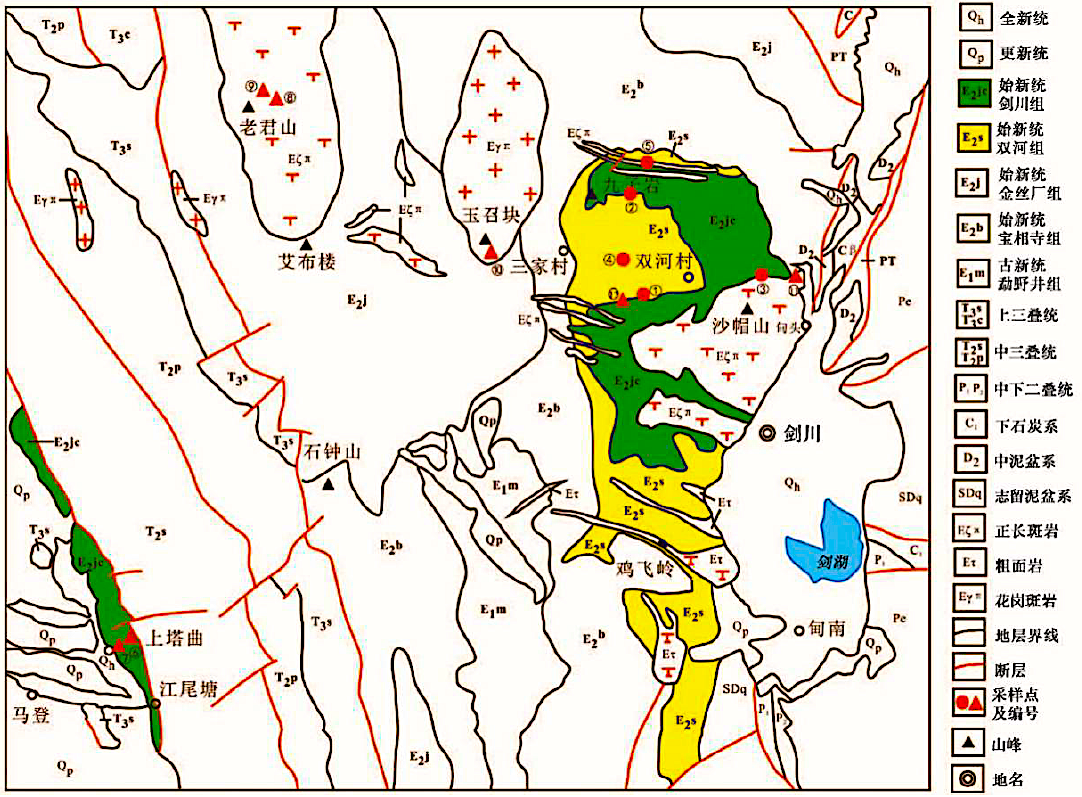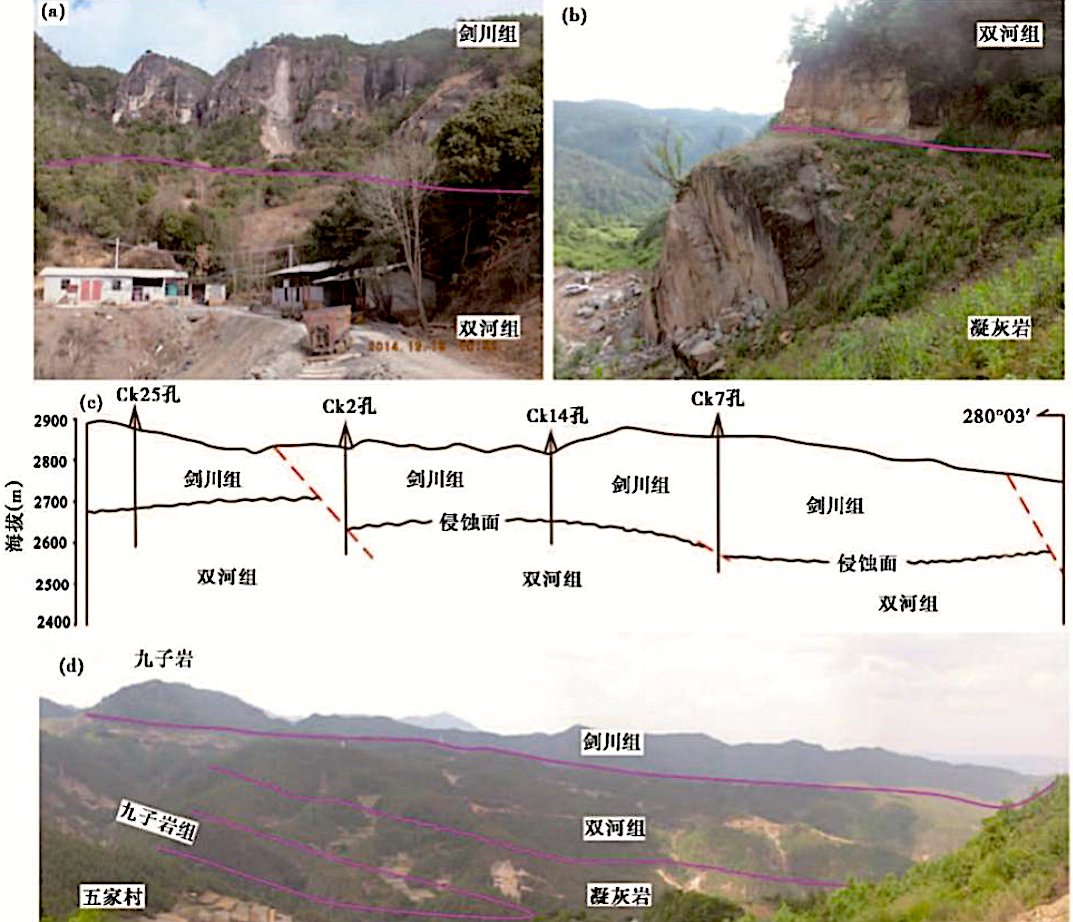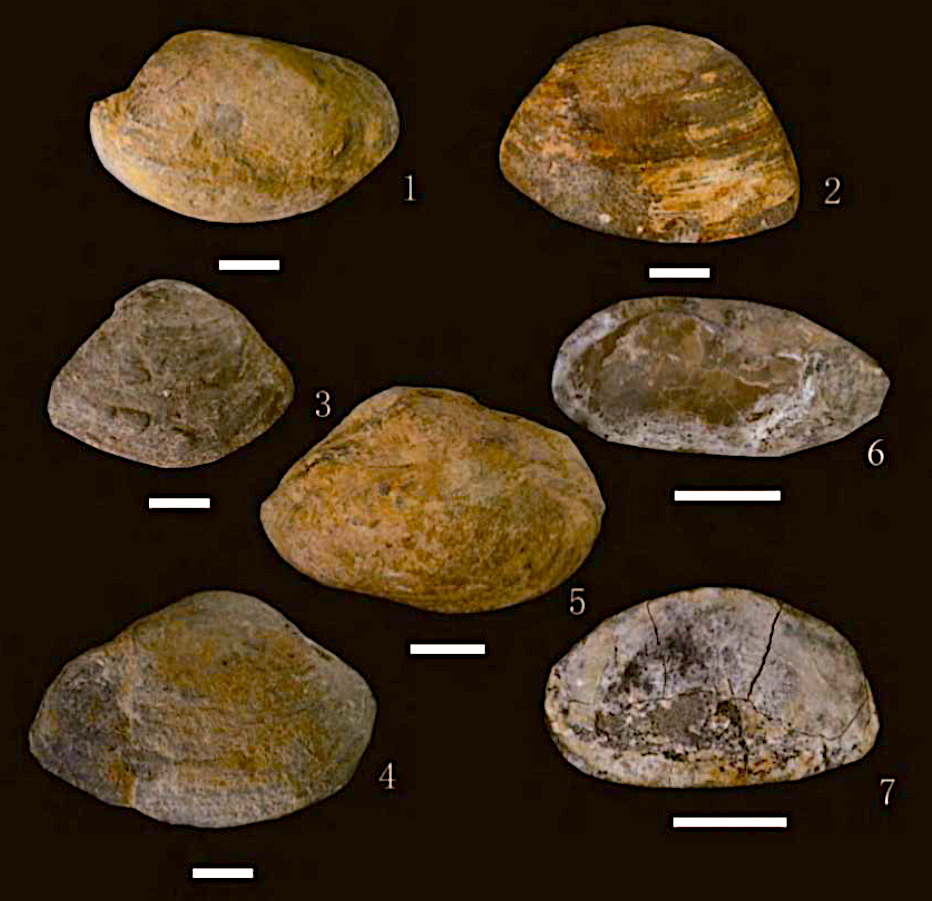Shuanghe Fm
Type Locality and Naming
Lijiang region. Named based on the Shuanghe coal (N26°35′00"; E99°50′00″), Jianchuan County, Yunnan. It was called the Shuanghe Coal Formation by the No. 12 Geological Party, Yunnan Bureau of Geology, in 1963. It is measured firstly by the First Regional Geological Survey Team of the Yunnan Bureau of Geology in 1959 and then second by the Twelve Geological Survey Team of the Yunnan Bureau of Geology in 1963. The reference section is located in the vicinity of Jiuzhiyan-Shicaijiang Village in the Shuanghe area, 8 km northwest of the seat of Jianchuan County, Yunnan Province.
[Figure: Geological map of the Jianchuan Basin, northwest Yunnan Province (Wang et al., 2020).]
[Figure: Stratigraphic column diagram of Jianchuan Basin (sample location, number and results). 1, sandy conglomerate; 2, mudstone; 3, limestone; 4, tuff; 5, coal seam; 6, marlite; 7, intrusive rock; 8, Ar-Ar age; 9, U-Pb age (Wang et al., 2020).]
Lithology and Thickness
Mainly grayish yellow sandstone and shale, containing coal. It is divided into two parts: Lower part, calcareous fine sandstone and gray sandy mudstone with lignite; Upper part, several beds of gray marl with 2 to 3 beds of minable bituminous coal. The thickness is 198-450 m.
[Figure: Coal-bearing strata of Jianchuan Formation: a, the Jianwetang section of Madeng Basin; the tuff layer prospect (b) and close range (c) of the Shuanghe coal mine area (Wang et al., 2020).]
Relationships and Distribution
Lower contact
It has an unconformable contact with the underlying Eocene Lijiang Fm.
Upper contact
Regional extent
GeoJSON
Fossils
The formation yields the Shuanghe flora, mainly including Picea, Pinus, Zelkova, Fagus and Ulmus; in addition, there are the bivalves Hyriopsis etc. and gastropods and ostracods.
[Figure: The Late Eocene bivalve fossils from the Shuanghe Formation in the Jianchuan Basin (Zheng et al., 2018).]
Age
Depositional setting
Additional Information
Tao Deng, Sukuan Hou, J.Z. Qigao, Q. Li, Q.Q. Shi, B.Y. Sun, S.Q. Wang, F.X. Wu



